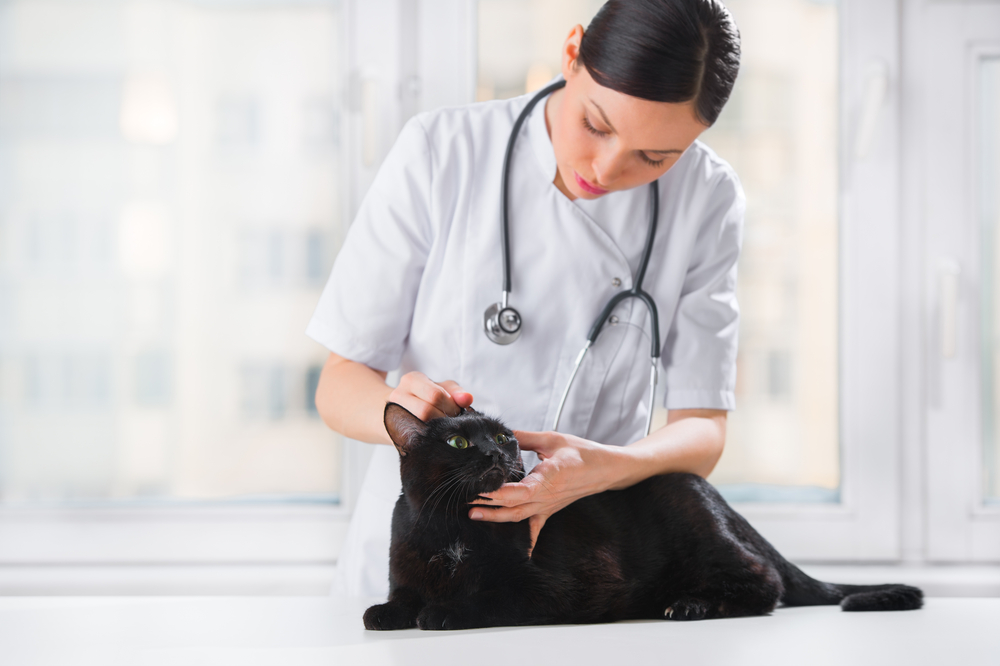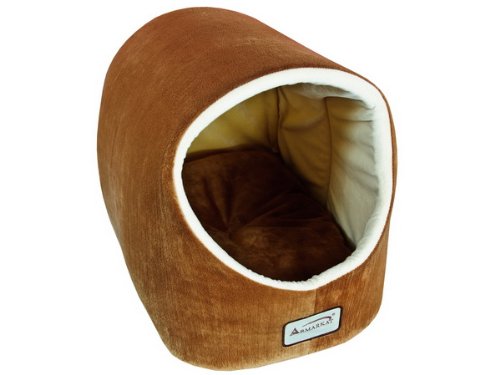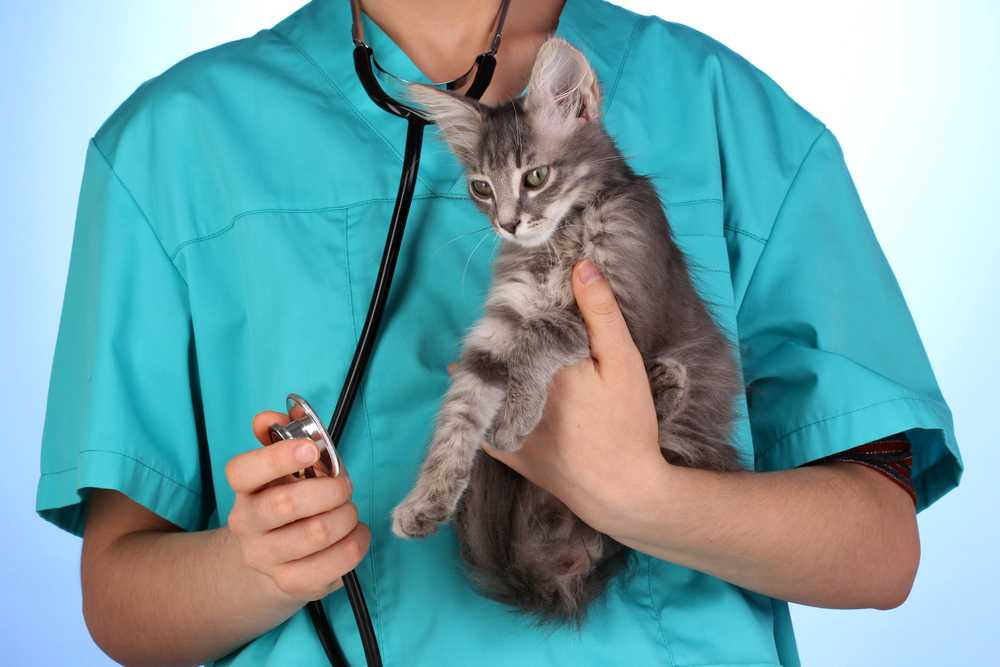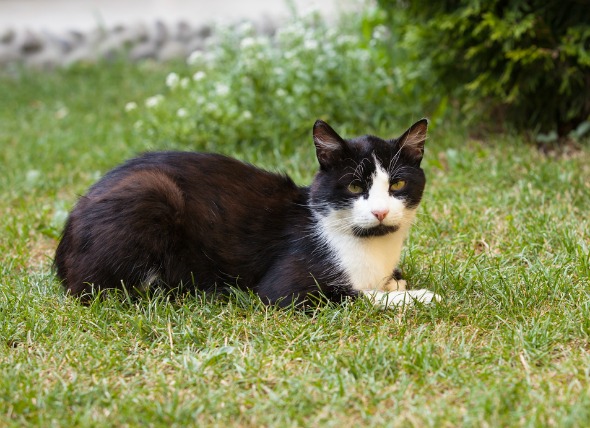
So what exactly is a cat going to cost you? And is a free cat really what it appears to be - a free cat? Let’s have a look at what a cat realistically is going to cost you throughout its life, so you can prep for and anticipate the needs of your new kitty - and so you don’t get shafted in the process.
Even with a free cat, there will be some shopping beforehand to set up your kitty with what it needs in your home.

The initial set-up and upkeep of a cat includes the typical: food, food and water bowls, scratching posts, litter trays, litter, toys, sleeping spots and a pet carrier. Perhaps you’ll even invest in a cat flap. And while there is an entire market that caters to the new pet owner, many of those things can also be gotten for cheap by buying the most basic yet sturdy kind of equipment. Meanwhile the pet carrier can double up as a sleeping spot - in fact, it is recommended as it will make going to the vet much easier - and carton boxes are perhaps the most cost efficient versatile toy and sleeping spot known to cats and man. A simple ribbon can be used for an interactive toy and ping pong balls can replace expensive cat toys. A pair of cereal bowl can be used to serve both water and food.
However, investing in an upscale brand of food can save you a series of veterinarian trips down the road as many popular commercial brands use for instance up to 5 times the maximum allotted amount of salt a day in their food, along with other things that make their food popular with cats, but not exactly nutritional - and puts them at risk for things such as bladder crystals and allergies. Think of it as investing in your kitty’s health by going for quality brands such as Iams, Hills, Royal Canin, etc. So check out their prices and the amounts a day on the back of the package. Do the math - this will be a permanent cost, after all.
And don't forget to calculate in your upcoming holidays - you'll need a cat sitter or some other strategy. Depending on the solution you come up with, this too will be a pretty penny.
So what about when your precious fur ball needs to see a veterinarian? Should you get ready to cozy up with the veterinarian already? Let's have a look at the different stages in a cat's life and the anticipated medical needs during each one.
So what are the medical costs in the first year of a kitten’s life? You start out with the vaccinations, de-worming and yearly check up. Vaccinations - depending on what diseases are common where you live - typically get administered at 6 weeks, 9 weeks and 12 weeks. That’s three trips to the veterinarian right there. This is important as the protection that the queen gives her kittens ceases to exist the second that she weans. Meanwhile, their immune system isn’t exactly stellar at this age. De-worming is expensive but definitely a necessity for kittens, every 2 weeks. Eventually, this will become less often until it settles on 2-4 times a year. Your vet will give you the schedule.
Within that same year, you’ll have to plan in the spaying or neutering of your kitten. Typically this happens between 6-9 months of age - when they start spraying or go in heat. Males tend to be a bit cheaper as it is a less invasive surgery.

Kittens have a weaker immune system the first year, so an occasional trip to the vet is to be calculated in as they grow into adulthood. Meanwhile, if you plan on letting them go outdoors, you won’t have to pony up for litter, but you’ll have to invest in anti-tick, flea and worm medication and any other anti-parasitic stuff that they are prone to in your area, unless you want to have parasites in your house.
An adult cat is going to be less fuss - normally. They’re in the prime of their life and with the exception of their yearly vaccinations, check-up and anti-parasitics for outdoor cats, their health is going to require little to no maintenance. There are some things to keep in mind, though:
Living indoors as well as being part of a multiple cat household puts a cat at risk of certain chronic stress issues which especially in neutered males can lead to bladder stones or crystals or chronic urinary tract infections which can become costly to treat and maintain. This risk however can be reduced significantly by addressing the trigger that causes the stress in their lives by employing a cat behaviourist or educating yourself on the topic of environmental enrichment and managing multiple cat households properly.
Outdoor cats are at risk of being hit by cars, fights with other animals in the neighbourhoods, the battle wounds that come with it and contagious diseases. Therefore it is even more vital for them to be vaccinated. Also, since you have no real way of monitoring their water intake and what comes out of them on the other end, it can be trickier to pick up on the early signals of illness, meaning the required treatment once you do discover the problem might be more drastic and expensive.
Senior cats tend to be less at risk for cuts and bruises as they tend to avoid fights more. On the other hand, they have a weaker immune system. There are three things to consider with older cats:
And when that final day does come…you might have a few veterinarian trips with blood testing, x-raying, staying at the veterinary clinic and other things that can add up quickly. Lastly, there might be a final, peace-giving shot as your last responsibility in caring for your kitty.
Those were the necessary and expected costs. What about the unexpected and surplus ones?
Well there is the chance of a genetic disease with chronic, permanent treatment, allergies that require special food for the rest of their lives, feliways to keep the peace in your household, a cat behaviourist to help out with problem behaviours that surface, the removal of a broken fang, the surgery, post-op and recovery that comes from being hit by a car or ingesting something detrimental like that string they were playing with and so on.
And let's not forget about the potential costs of a kitty vacation - or rather, the cost of having someone else take care of your cat when you're on holiday.
 All of this however does have a very easy solution. If you know what to anticipate, what to expect when you adopt that sweet little fur ball into your loving home, you can also ensure that you don’t come to regret adopting them and resent them for existing and having needs. Just by keeping some emergency cash on hand for those problems that just pop up, and by budgeting in kitty’s daily living cost before you decide to adopt, you’ll save both of you a lot of potential head aches. You could even set aside a small amount each month for all your cat related expenses.
All of this however does have a very easy solution. If you know what to anticipate, what to expect when you adopt that sweet little fur ball into your loving home, you can also ensure that you don’t come to regret adopting them and resent them for existing and having needs. Just by keeping some emergency cash on hand for those problems that just pop up, and by budgeting in kitty’s daily living cost before you decide to adopt, you’ll save both of you a lot of potential head aches. You could even set aside a small amount each month for all your cat related expenses.
And please, feel free to do the research - check with the vet you will likely employ what his prices on all the things listed here, so you can make a truly informed decision.
With all this said and done - owning your very own fur ball definitely comes with its rewards and can be immensely satisfying so don’t let this stuff scare you to become their owner. There is no earthly reason why you shouldn’t adopt and reap those benefits once you’ve covered your bases.
 How to Take Care of Feral Cats in the Winter
How to Take Care of Feral Cats in the Winter
How to Take Care of Feral Cats in the Winter
How to Take Care of Feral Cats in the Winter
 Diseases of the Skin on the Nose of the Cat
Nasal Dermatoses in Cats
Many diseases affect the
Diseases of the Skin on the Nose of the Cat
Nasal Dermatoses in Cats
Many diseases affect the
 Tabby Cats as Family Pets
Who has not had the experien
Tabby Cats as Family Pets
Who has not had the experien
 Bacterial Infection (Campylobacteriosis) in Cats
Campylobacteriosis in Cats
Campylobacteriosis is
Bacterial Infection (Campylobacteriosis) in Cats
Campylobacteriosis in Cats
Campylobacteriosis is
 Stomach Worm Infection (Physalopterosis) in Cats
Physalopterosis in Cats
Physalopterosis is caused
Stomach Worm Infection (Physalopterosis) in Cats
Physalopterosis in Cats
Physalopterosis is caused
Copyright © 2005-2016 Pet Information All Rights Reserved
Contact us: www162date@outlook.com